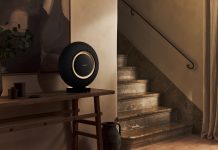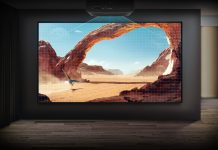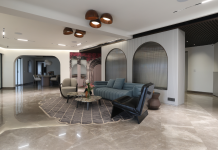
Kembhavi Architecture Foundation (KAF), established in 1972 by Sharad and Nalini Kembhavi and now led by partners Indrajit, Nita, Parth, and Sowmya Kembhavi, is one of India’s leading architectural and design firms. KAF provides a wide range of services, including architectural design, interior design, project management, and Green Building solutions. Their prestigious clients include Tata Housing, Puravankara, Prestige Group, and General Motors, among others. Indrajit and Nita Kembhavi recently shared their insights with Smart Home World, discussing the impact of building automation and the advantages of smart lighting, among other topics.
Please tell us about your creative journey and the turning point in your creative journey.
My creative journey has been woven around the principles of contextually relevant green design, where we approach each project with a lot of sensitivity binding culture, economics, sustainability, aspirations, etc. to evolve a design that is true to its context, we approach each design holistically as we believe no two projects can be identical.
Can you share a few of your signature projects, and how technology has aided your designs?
Some of our signature projects include The Zone at Cochin International Airport, Bodhi by Cardinal Energy, Novel Tech Park, and Landmark Vertica at Chennai. Etc.

The projects though varied in nature involve technology from Building Information Modelling (BIM), solar & thermal studies, Building Management Systems (BMS) for water/energy optimization, etc.
Can you share your views on the integration of Building Automation Systems in your projects and the advantage it provides to the users?
Building Automation Systems (BAS) in our projects play a crucial role in optimizing building performance by providing real-time monitoring and control of environmental conditions, thus ensuring enhanced comfort and energy efficiency for users.

How would you define the role of technology, especially Building Automation Systems (BAS), in contemporary architecture?
In contemporary architecture, technology, especially BAS, acts as a catalyst for sustainable development by enabling precise control over lighting, HVAC systems, and energy management, thereby reducing operational costs and environmental impact.
You work on large-scale government projects, large townships, and hospitals; how has integrating Building Automation Systems helped? Can you explain the advantages and brand names and their benefits?
Integrating BAS in large-scale projects such as government buildings and hospitals has proven instrumental in enhancing operational efficiency and user comfort. Brands like Siemens, Legrand and Schneider Electric have been pivotal in providing robust solutions tailored to our project needs.

How has the implementation of technology, including BAS, contributed to the overall efficiency and performance of your projects?
The implementation of technology, including BAS, has significantly streamlined our project workflows by enabling seamless communication and collaboration among stakeholders, ultimately enhancing project delivery efficiency.
Have you observed any notable improvements in energy efficiency or operational optimization?
Yes, the adoption of BAS has led to notable improvements in energy efficiency and operational optimization across our projects, ensuring sustainable practices and reducing lifecycle costs.

How has technology improved collaboration and communication among different stakeholders in your projects?
Technology has greatly improved collaboration by facilitating real-time data exchange and coordination among architects, engineers, contractors, and clients, fostering a holistic approach to design and construction.
Have you experienced enhanced coordination with builders, contractors, and other professionals through the use of technology?
Technology has revolutionized coordination with builders and contractors through digital tools that enable precise project management and real-time monitoring, ensuring adherence to design intent and quality standards.
What specific benefits or advantages have you observed in using smart lighting systems?
Smart lighting systems have proven invaluable in our designs, offering benefits such as energy savings, adaptable lighting environments, and enhanced aesthetics, thus enriching the user experience while optimizing energy consumption.

How do building automation systems contribute to energy efficiency and sustainability in your projects?
BAS contributes significantly to energy efficiency and sustainability by automating energy-intensive systems like HVAC and lighting, optimizing resource usage, and reducing carbon footprint across our projects.
Have you observed a noticeable reduction in energy consumption by implementing smart technologies?
By implementing smart technologies, we have observed substantial reductions in energy consumption, thanks to advanced monitoring capabilities and adaptive control systems that ensure optimal performance and operational efficiency.















